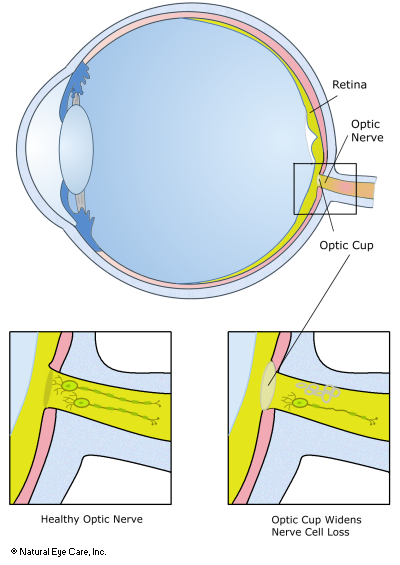Optic Nerve Atropy
Optic atrophy refers to the death of the retinal ganglion cell axons that comprise the optic nerve with the resulting picture of a pale optic nerve on fundoscopy. Optic atrophy is an end stage that arises from myriad causes of optic nerve damage anywhere along the path from the retina to the lateral geniculate
🌱 Stem Cell Therapy for Optic Nerve Atrophy
Current Research and Approaches:
Types of Stem Cells Studied:
Mesenchymal Stem Cells (MSCs): Derived from bone marrow, adipose tissue, or umbilical cord; known for anti-inflammatory and neuroprotective effects.
Neural Stem Cells (NSCs): Capable of differentiating into nerve cells.
Induced Pluripotent Stem Cells (iPSCs): Patient-derived cells reprogrammed to become retinal or neural cells.
Mechanism of Action:
These cells may help by:
Releasing growth factors that protect existing optic nerve cells.
Reducing inflammation.
Possibly integrating into damaged neural tissue (though integration into the optic nerve is very challenging and rare).
Delivery Methods:
Intravitreal injection: Directly into the eye.
Retrobulbar injection: Behind the eyeball, closer to the optic nerve.
Intrathecal or intravenous injection: Broader, systemic delivery (less targeted).
Clinical Trials and Evidence:
A few early-phase clinical trials (especially in China, India, and the U.S.) show that some patients report improvements in vision, but results are highly variable and not yet conclusively proven.
The FDA and other regulatory bodies consider stem cell treatment for ONA experimental and not yet approved as standard therapy
What is optic atrophy?
Optic atrophy is a condition that affects the cells of your optic nerve, which carries impulses from your eye to your brain. “Atrophy” means to waste away or deteriorate. Optic nerve atrophy is another name for optic atrophy, and it’s a serious condition.
Atrophy of the optic nerve is a condition that happens because of long-term damage to optic nerve fibers from many different causes. Optic atrophy can cause irreversible issues with vision, including blindness.
Symptoms and Causes
What are the symptoms of optic atrophy?
Optic atrophy symptoms relate to changes in vision, including:
- Blurred vision or a reduction in sharpness of vision.
- Difficulties with peripheral vision.
- Difficulties with color vision.

What causes optic atrophy?
Nerve fibers that transmit impulses to your brain make up your optic nerve. In the case of optic atrophy, something is interfering with your optic nerve’s ability to transmit these impulses. Many factors can cause this interference, including:
- Lack of proper blood flow (vascular/ischemia): This is the most common cause of optic nerve atrophy.
- Conditions that you’re born with or inherit (congenital): One condition, Leber’s hereditary optic neuropathy, causes you to lose vision in one eye first and then the other.
- Pressure from outside (extrinsic compression) and inside the nerve (intrinsic compression): The pressure can come from tumors. Glaucoma can damage your optic nerve and sometimes includes high eye pressure (intraocular pressure).
- Damage from inflammation, either from other diseases or swelling in the optic nerve itself: One cause is optic neuritis, which is inflammation of your optic nerve. Another is hydrocephalus, or fluid collection in your brain.
- Damage from infections: These infections can include diseases like syphilis and measles.
- Trauma (eye injury): Eye injuries can happen in many ways, including industrial or car accidents, sports or fighting.
- Damage from diseases of the retina: Retinal diseases include diabetes-related retinopathy and retinal vein occlusion.
- Damage from toxins, nutritional deficits or medications:Optic nerve atrophy from these causes usually affects both eyes.
How is optic atrophy treated?
There’s no real cure or treatment for optic atrophy. This is why it’s so important to have regular eye exams and to see your healthcare provider right away for vision changes.
Your provider will need to treat the cause of the optic atrophy to stop the condition from getting worse. For instance, they may need to remove a tumor or remove fluid from your brain and spinal cord.

Conventional treatments cannot restore vision; they are supportive therapies to delay the progression of the disease. Stem cells have a great deal of potential to replace damaged cells and provide hope for children suffering from such a debilitating condition.
Once the stem cells are in the retrobulbar area (the tissue behind your eye), they can begin working on damaged parts and start restoring energy to optic fibers and retinal cells. Differentiated mesenchymal stem cells can be used to repair lesions in optic nerve fibers as well as prevent further damage by replacing damaged or lost retinal pigment epithelium, thus improving vision, the field of vision, and color discrimination capacity for patients who’ve sustained Optic Nerve Injuries or Atrophy.
Frequently Asked Questions...
Common delivery methods include:
Intravitreal injection (into the eye)
Retrobulbar injection (behind the eye)
Intrathecal injection (into the spine)
Intravenous infusion (systemic delivery)

